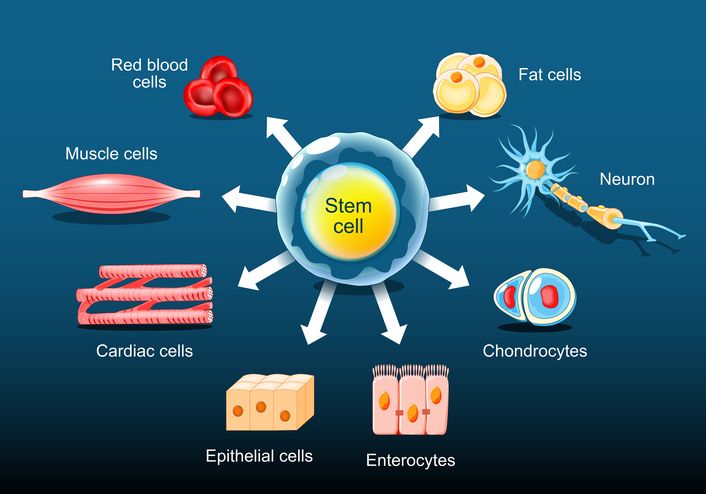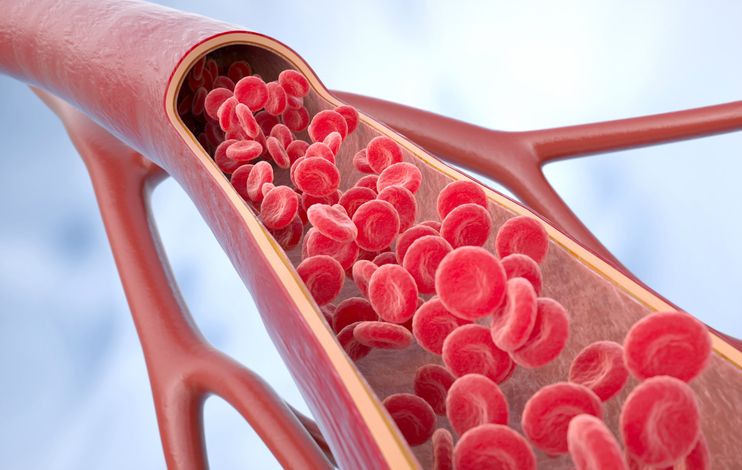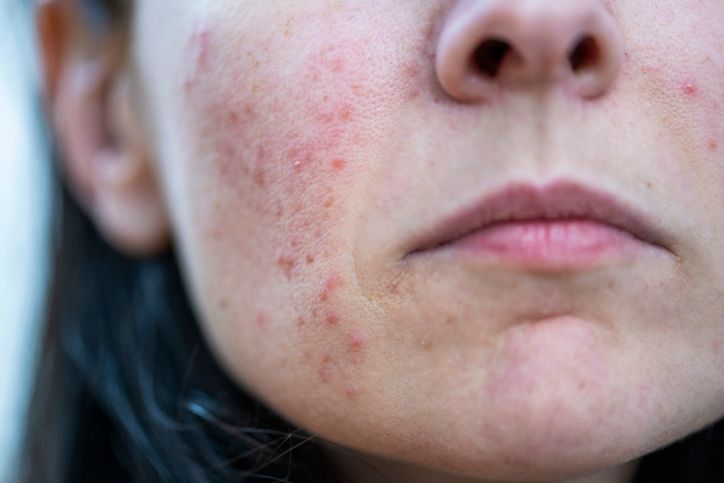
Author: Natalie Ng|Updated: 19 September 2025
Stem cell hair therapy is a new way to help with hair loss. By using stem cells, this treatment supports hair growth and helps bring back healthy, strong hair. It works by waking up dormant hair follicles, improving blood flow to the scalp, and creating the right conditions for new hair to grow. This method is becoming more common for people dealing with hair thinning, male or female pattern baldness, or sudden hair loss. It often involves using stem cells from fat tissue or hair follicles, along with natural growth factors, to give your hair the support it needs. Some clinics also combine it with other treatments like PRP hair treatment or hair transplants. Wondering how stem cell hair therapy helps promote hair growth and improve hair thickness? Let’s look at the five main ways it helps restore your hair.

Stem Cell Hair Therapy Activates Dormant Hair Follicles for Hair Regrowth

Hair loss often happens because dormant hair follicles stop producing new hair. Hair growth stops when follicles no longer receive the necessary signals or conditions to remain active, leading to hair loss. These follicles aren’t dead, but they need help to start growing again. Stem cell hair therapy gives them the right signals to reactivate and support hair regrowth.
How dormant hair follicles lead to thinning hair
Hair follicles can enter a resting phase where they stop producing new hair. This can happen due to hormonal imbalances, genetics, or issues like androgenetic alopecia and female pattern hair loss. Androgenic alopecia is another common hormone-related form of hair loss, characterized by hair follicle miniaturization due to DHT activity. Over time, the follicles shrink, and the hair they produce becomes thinner or falls out.
When hair follicles stay dormant for too long, they struggle to re-enter the active growth phase. This is where stem cell treatment makes a difference.
Early hair loss is the best stage for targeted treatment, as timely intervention can help prevent further thinning and support regrowth.
How stem cells reactivate hair follicles
Stem cells are harvested from sources like fat tissue (adipose-derived stem cells) or hair follicles. Other sources include mesenchymal stem cells and embryonic stem cells, which have shown potential in stimulating hair growth and follicular development. Fat cells (adipocytes) can also provide mesenchymal stem cells used in regenerative hair treatments. They are rich in growth factors like transforming growth factor, vascular endothelial growth factor, and platelet derived growth factor. These growth factors support cell regeneration and stimulate hair growth.
During stem cell hair therapy, these cells are injected into the scalp, targeting areas with thinning hair or bald spots. The stem cells help repair and rebuild the structure of the follicles. They also stimulate the hair follicle stem cells, encouraging them to produce new cells and support the hair growth cycle.
This process promotes hair regeneration by extending the anagen phase, which is the active growth phase of the hair cycle. The result is stronger, thicker hair and improved hair density over time.
Supporting hair follicle health for long-term regrowth
Healthy follicles need a strong support system. Stem cell therapy creates an environment where hair follicles can thrive by improving blood flow, delivering oxygen and nutrients, and supporting cell proliferation. For people with early or moderate hair loss, this treatment helps preserve enough viable hair follicles to make regrowth possible.
Patients can expect hair density to improve over time as the treatment supports the regrowth of thicker, healthier hair.

Stem Cell Hair Therapy Enhances Blood Flow for Hair Regrowth

Healthy blood flow is essential for delivering the nutrients and oxygen that hair follicles need to grow. Without it, hair follicles weaken, shrink, and eventually stop producing new hair. Stem cell therapy boosts circulation by utilizing growth factors like vascular endothelial growth factor and fibroblast growth factor, as well as hepatocyte growth factor, which stimulates hair follicles and increases blood supply to support the anagen phase of the hair cycle, creating a better environment for hair growth.
Why blood flow is important for hair follicles
Hair follicles rely on a network of blood vessels to receive oxygen, growth factors, and nutrients. When this system breaks down, follicles are starved of what they need, leading to hair thinning and hair loss. Poor circulation is often linked to conditions like male pattern baldness and female pattern hair loss.
Without a healthy blood supply, even the best hair growth treatments or hair supplements may not reach the follicles effectively. That’s why improving circulation is a key part of stem cell hair therapy.
How stem cell therapy improves circulation in the scalp
Stem cells stimulate the formation of new microvessels in the scalp, helping to increase the blood supply to the hair follicles. These cells release growth factors like vascular endothelial growth factor and fibroblast growth factor, which promote the development of new blood vessels.
During treatment, scalp massages are used to encourage blood vessels to widen. This helps deliver stem cells and nutrients directly to the follicles. The combination of stem cell therapy and improved circulation creates the right conditions for hair regeneration and supports healthy hair growth.
Supporting blood flow at home for better results
You can maintain and support the benefits of stem cell therapy by gently massaging your scalp for a few minutes each day. This helps promote regular blood flow and delivers oxygen and nutrients to the follicles, giving your hair the best chance to grow thicker and stronger.
Read More
Book Now to Experience
F8 Hair Regrowth Treatment
1 Minute Self-Registration
Date should not be before minimal date

Stem Cell Hair Therapy Reduces Inflammation and DHT Production for Healthier Hair Growth
Inflammation and high levels of DHT are two major reasons hair follicles weaken and stop growing hair. Inflammation can damage the hair follicles, while DHT causes them to shrink over time. Together, they create a tough environment for hair growth, leading to hair loss, thinning, and a shorter hair growth cycle. Stem cell therapy is designed to treat hair loss by targeting both inflammation and DHT production.
How stem cells reduce inflammation
When hair follicles become inflamed, the immune system starts an attack, which leads to swelling and damage. Stem cells release special proteins that calm this immune response. These proteins, called cytokines, help reduce inflammation and protect the hair follicles from further harm. The result is a healthier scalp where hair follicles can recover and continue their natural growth cycle.
How stem cells help lower DHT levels
DHT is a byproduct of testosterone, and it’s a major cause of male pattern baldness, female pattern hair loss, and androgenetic alopecia. Stem cells help by slowing down the enzymes that convert testosterone into DHT. By reducing the production of DHT, stem cell therapy protects hair follicles from shrinking and promotes stronger, thicker hair growth.
This dual effect—reducing inflammation and blocking DHT—creates the right conditions for hair follicles to survive, recover, and produce healthy hair.

Stem Cell Hair Therapy Strengthens the Hair Growth Cycle
Hair growth happens in cycles, and each phase of the cycle plays an important role in healthy hair. Stem cell hair therapy helps extend the active growth phase, giving your hair more time to grow and reducing the chances of shedding or thinning. In addition, this therapy can help restore hair thickness over time. Stem cell therapy may also help regenerate lost hair by activating dormant follicles and supporting the hair growth cycle.
Why the hair growth cycle affects hair thickness
The hair growth cycle includes three main phases:
• The anagen phase, where hair grows
• The catagen phase, a short transition period
• The telogen phase, when hair rests and eventually sheds. Conditions like telogen effluvium can cause excessive shedding by pushing more follicles into the telogen phase prematurely.
When hair loss happens, the anagen phase becomes shorter, and more follicles enter the telogen phase. This leads to weaker, thinner hair. Stem cell therapy works by supporting hair follicle stem cells and restoring balance in the hair growth cycle.
How stem cells support the hair growth cycle
Stem cells release growth factors like transforming growth factor, fibroblast growth factor, and platelet derived growth factor. These help promote cell proliferation in the hair follicles and stimulate hair growth. By extending the anagen phase, stem cell therapy allows hair to stay in the growing stage longer, leading to thicker and healthier hair strands.
The treatment also supports the development of new hair follicles and strengthens existing ones, improving overall hair density. For people dealing with androgenetic alopecia, female pattern hair loss, or acute hair loss, this therapy can help restore hair thickness over time.

Stem Cell Hair Therapy Creates a Nutrient-Rich Scalp Environment for Hair Growth
For hair follicles to grow strong, they need the right environment. A healthy scalp provides the oxygen, nutrients, and growth factors that hair follicles need to stay active. Stem cell hair therapy helps create these ideal conditions, supporting long-term hair growth and hair density.
Why a nutrient-rich scalp supports hair regeneration
Hair follicles are like tiny factories, producing new hair strands every day. They need a steady supply of nutrients, oxygen, and healthy proteins to function properly. When the scalp lacks these essentials, hair growth slows, the follicles weaken, and hair density decreases.
Stem cell therapy works by enriching the scalp with growth factors like vascular endothelial growth factor, platelet derived growth factor, and fibroblast growth factor. These factors promote cell proliferation, helping to develop new hair follicles and strengthen existing ones.
How stem cells improve the scalp environment
Stem cells stimulate the scalp to produce a healthy balance of proteins, oxygen, and nutrients. They also help regulate pH levels, which is important for hair health. With more nutrients reaching the follicles, hair is more likely to grow thick and strong.
The therapy also supports the formation of new blood vessels, which improves blood flow and delivers growth factors exactly where they are needed. This helps restore hair regeneration and supports the anagen phase of the hair growth cycle.
Stem cell therapy creates an active, nutrient-rich environment where hair follicles can thrive. For many people dealing with moderate hair loss, female pattern baldness, male pattern baldness, or even alopecia areata patients, this process can make a significant difference in hair thickness and hair regrowth over time.
Book Now to Experience
F8 Hair Regrowth Treatment
1 Minute Self-Registration
Date should not be before minimal date

Best Candidates for Stem Cell Hair Therapy for Hair Loss
Stem cell hair therapy can help people with different types of hair loss, especially when there are enough viable hair follicles left to support regrowth. This treatment is most effective for early to moderate hair thinning, when the hair follicles are still present but need support to grow again. Unlike hair transplants, which require donor hair from the back or sides of the scalp to be transplanted to balding areas, stem cell therapy works with your existing follicles to stimulate regrowth.
Who benefits most from stem cell hair therapy
Stem cell hair therapy is a strong option for people dealing with male pattern baldness, female pattern hair loss, and androgenetic alopecia. These conditions are some of the most common causes of hair thinning and hair loss. By stimulating hair follicle stem cells, improving blood flow, and reducing DHT levels, stem cell therapy helps restore healthy hair growth.
People with thinning hair caused by hormonal imbalances, stress, or nutritional deficiencies may also benefit. Stem cell therapy supports hair regrowth by improving the scalp’s health, reducing inflammation, and promoting the anagen phase of the hair growth cycle.
Stem cell hair treatment for alopecia areata and other conditions
Some alopecia areata patients may respond well to stem cell hair therapy. The treatment helps repair damaged hair follicles and creates the right conditions for new hair growth. The results depend on the severity of hair loss and how many viable hair follicles remain.
For advanced hair loss or areas with no viable hair follicles, stem cell therapy alone may not be enough. In these cases, combining it with a hair transplant, PRP hair treatment, or hair growth supplements can improve results.
Combining stem cell therapy with other hair loss treatments
Stem cell therapy often works better when used alongside other hair restoration treatments. Combining stem cell therapy with PRP hair treatment increases the benefits of growth factors like platelet derived growth factor and fibroblast growth factor. The Calecim Advanced Hair System is a clinic-based stem cell therapy that uses scientifically-backed growth factors and can be combined with microneedling or low-level laser therapy for enhanced results. Pairing stem cell therapy with low level laser therapy can also improve blood circulation, delivering more oxygen and nutrients to the scalp.
For people planning a stem cell hair transplant, stem cell therapy can help prepare the scalp by strengthening the hair follicles and improving the scalp environment. This can make the transplant more successful and support long-term hair density.
Stem cell hair therapy offers a promising solution for many people with hair loss, but the success of the treatment depends on having enough viable hair follicles for hair regrowth.

Comparing Stem Cell Hair Therapy with Other Hair Loss Treatments
There are many options available for treating hair loss, and each one works in a different way. Understanding the differences between treatments can help you choose the best approach for your needs. Stem cell hair therapy is unique because it focuses on hair regeneration by repairing damaged hair follicles and creating a healthy scalp environment for new hair to grow.
PRP hair treatment vs. stem cell hair therapy
PRP hair treatment, or platelet-rich plasma therapy, uses platelets from your own blood to stimulate hair growth. The process involves drawing a small amount of blood, spinning it to separate the platelets, and then injecting the concentrated plasma into the scalp. PRP is often more affordable than stem cell therapy, but it typically requires more frequent sessions, such as monthly treatments, to maintain results.
PRP works by delivering growth factors like platelet derived growth factor to the scalp, which can help promote hair growth. However, PRP focuses on stimulating existing follicles, while stem cell therapy goes a step further by helping rebuild damaged follicles and supporting the hair growth cycle for long-term hair regeneration.
Hair transplants vs. stem cell hair therapy
Hair transplants involve surgically removing hair follicles from one part of the scalp (or body) and placing them into thinning or bald areas. While hair transplants can provide dramatic results, the procedure is more invasive, has a longer recovery period, and carries the risk of complications like scarring.
Stem cell hair therapy, on the other hand, is non-surgical. It focuses on stimulating dormant hair follicles and improving the overall health of the scalp. For people with enough viable hair follicles left, stem cell therapy can help promote natural hair regrowth and delay or even prevent the need for a hair transplant.
Medications for hair loss vs. stem cell therapy
Medications like minoxidil and finasteride are common treatments for hair loss. Minoxidil is a topical treatment that helps increase blood flow to the scalp, while finasteride is an oral medication that works by reducing DHT levels, which helps prevent hair follicles from shrinking.
Both treatments can slow down hair loss and promote regrowth, but they require continuous use to maintain results. If you stop using these medications, hair loss often resumes. Stem cell therapy works differently by repairing hair follicles, supporting long-term hair health, and improving the scalp environment, which can lead to longer-lasting results.
The benefits of stem cell therapy for hair loss
Stem cell hair therapy offers a balance between effectiveness and invasiveness. It is less invasive than a hair transplant, requires fewer treatments than PRP hair treatment, and supports natural hair regrowth without the long-term commitment of daily medications. Stem cell therapy can be an effective option for people looking to restore hair density, promote hair growth, and support the hair growth cycle in a natural way.

F8 Hair Regrowth Treatment: A Powerful Support for Stem Cell Hair Therapy
For those seeking to promote hair growth and improve hair density, combining stem cell hair therapy with the F8 Hair Regrowth Treatment can help boost results. While stem cell therapy focuses on repairing damaged hair follicles and supporting hair regeneration, the F8 Hair Regrowth Treatment works by improving scalp health and creating the right conditions for long-term hair growth.
How the F8 Hair Regrowth Treatment works
The F8 Hair Regrowth Treatment uses a non-invasive, low-energy laser combined with a nourishing hair growth serum. This combination helps stimulate inactive hair follicles, strengthen hair papilla, and improve microcirculation by repairing capillaries. Better blood flow delivers more oxygen and nutrients to the hair follicles, which is essential for healthy hair growth.
During the treatment, a hair expert examines the scalp using 200x magnification to identify areas of hair loss and thinning. The therapist then applies low-level laser energy evenly across the scalp. This energy encourages the hair follicles to enter the anagen phase, which is the active growth phase of the hair cycle. After the laser, a serum rich in hair-boosting nutrients is applied to the scalp, helping cleanse the pores, balance sebum production, and hydrate the scalp for a healthier environment.
Why the F8 Hair Regrowth Treatment enhances stem cell therapy
While stem cell hair therapy repairs and reactivates dormant hair follicles, the F8 Hair Regrowth Treatment supports this process by improving blood flow, reducing scalp inflammation, and delivering essential nutrients. A healthier scalp environment allows stem cell therapy to work more effectively. The combined effect of improved microcirculation and nutrient absorption maximizes the benefits of stem cell treatment for hair loss, helping to promote hair growth and improve hair density.
This treatment is safe for both men and women dealing with hair loss, thinning hair, or female and male pattern baldness. It is non-invasive and has no downtime, making it an easy addition to a hair restoration plan.
Key benefits of the F8 Hair Regrowth Treatment
• Stimulates hair follicles and hair papilla for stronger hair
• Improves microcirculation, delivering more nutrients to the follicles
• Helps control sebum and balances scalp hydration
• Supports scalp health for long-term hair growth
• Safe for both men and women with thinning hair or scalp concerns
• Non-invasive, pain-free, and no recovery time needed
Combining stem cell hair therapy with the F8 Hair Regrowth Treatment can improve hair thickness, support new hair growth, and create a healthy scalp for lasting hair restoration.
If you’re ready to explore how these treatments can work together for stronger, healthier hair, book F8 today and start your journey toward hair regrowth.
New Beauty's F8 Hair Regrowth TreatmentBook Now to Experience
F8 Hair Regrowth Treatment
1 Minute Self-Registration
Date should not be before minimal date
FAQ
1. Can stem cell hair therapy help with hair loss caused by stress?
Yes, stem cell hair therapy can support hair regrowth for people experiencing acute hair loss induced by stress. Stress can cause hair follicles to enter the resting phase too soon, leading to sudden hair fall. Stem cell therapy helps restore the hair growth cycle by stimulating hair follicle stem cells, improving blood flow, and delivering growth factors that promote new hair growth. It also supports a healthy scalp environment, which is essential when hair loss is linked to stress or hormonal imbalances.
2. Are stem cell hair treatments safe for people with hormonal imbalances?
Stem cell hair therapy is generally safe for people dealing with hair thinning related to hormonal imbalances, such as female pattern baldness or male pattern baldness. Hormonal changes can disrupt the hair growth phase, causing hair thinning or loss. Stem cell treatments work by strengthening hair follicles, supporting blood supply, and reducing inflammation, which helps the scalp recover from hormone-related damage. However, it's important to consult a specialist to see if stem cell therapy is right for your specific condition.
3. How many treatment sessions are needed for stem cell hair therapy to show results?
The number of stem cell therapy sessions needed can vary based on the severity of hair loss and the health of the hair follicles. Many people start seeing visible results, such as improved hair density and reduced hair fall, within 3 to 6 months. Clinics often recommend a series of weekly in-clinic treatments at first, followed by regular maintenance sessions to support ongoing hair regeneration.
4. Can stem cell therapy support hair transplants and improve results?
Yes, combining stem cell therapy with a hair transplant can improve outcomes. Stem cell therapy prepares the scalp by enhancing blood flow, delivering growth factors, and strengthening existing hair follicles. This creates a healthier environment for transplanted hair follicles, helping them establish better and supporting long-term hair regrowth. Using stem cell treatments alongside hair transplants may also promote a thicker, more natural-looking result.
5. Does stem cell hair therapy work for thinning hair in women?
Stem cell hair therapy is a promising option for women experiencing hair thinning or female pattern hair loss. Many women with moderate hair loss or thinning hair have seen improvements in hair thickness, scalp health, and hair density after stem cell treatment. The therapy targets the underlying causes of hair loss, like poor blood flow, inflammation, and weakened hair follicle stem cells. It helps restore the scalp environment for healthier hair growth and is a non-invasive alternative to more aggressive treatments.
Recommended Articles
COPYRIGHT© NEW BEAUTY MANAGEMENT LIMITED 2026. ALL RIGHT RESERVED.




